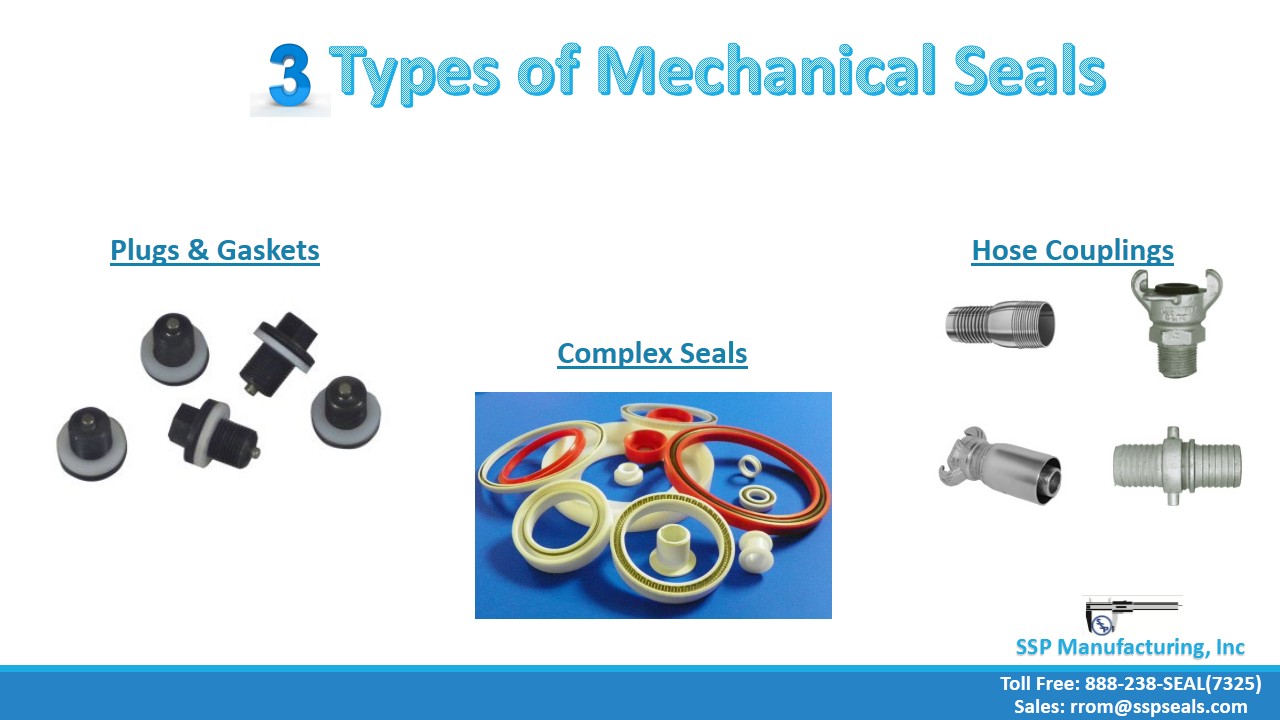 sales: gm@sspseals.com Toll Free: +1-888-238-SEAL Request A Quote
sales: gm@sspseals.com Toll Free: +1-888-238-SEAL Request A Quote
Seals are used to keep liquids and gases from entering certain areas or mixing with one another. A mechanical seal is a type of seal that uses mechanical pressure to seal a certain area or equipment.
Three Main Types of Mechanical Seals –
A plug is jammed into an opening to keep any liquids or gases from entering. The mechanical pressure with which the plug is forced into an opening causes complete sealing. One of the earliest and simplest types of seals, plugs are used in wine bottles. A gasket is similar to a plug in function. It uses mechanical pressure to provide sealing properties. The difference lies in the material being used. A gasket is made of a spongy material. This helps in providing a surer seal. If two pipes or devices being sealed are not properly aligned, or slightly differ in size, this seal is able to fit into both and provide a better seal. It helps in sealing as well as joining the two misaligned parts.
A hose coupling is fitted at the end of a hose, which connects to the water source. Hose couplings are fit on tightly at the end of a pipe. This creates a very tight seal, which doesn’t allow any water to escape.
Some seals use both pressure as well as tight fit to provide efficient sealing. Shafts are a kind of complex mechanical seal that fit tightly in their casing. There is a layer of oil where they meet. A gasket is also inserted between the casing and the shaft. All of this together helps in keeping the water from entering the seal.

Mechanical seals are used in a variety of applications to keep various liquids, gases, and dirt from entering specific parts of an application. They prevent contamination and increase operational efficiency of a unit.
Apr 17, 2024
Embracing Innovation in Sanitary Gaskets for 2024Mar 20, 2024
Explore All About Industrial Oil SealsJan 08, 2024
Top Reasons for Using Wiper Seal in Hydraulic SystemsDec 19, 2023
Typical Food-Grade Seal Failures and Strategies for ResolutionNov 22, 2023